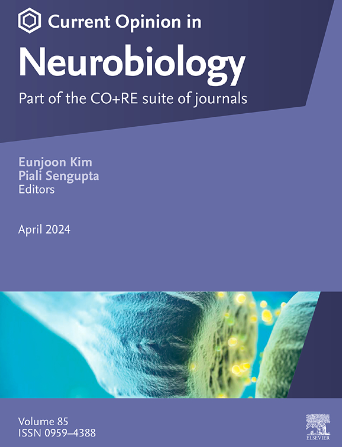时光倒流:衰老的可塑性及其返老还童
IF 5.2
2区 医学
Q1 NEUROSCIENCES
引用次数: 0
摘要
随着年龄的增长,我们的大脑受到经验和内在生物变化的影响。这种外部和内部因素的结合决定了我们大脑的运作方式。神经元可塑性过程可以存储感觉世界的信息,调节神经回路的活动水平,维持神经回路的稳定功能。这些与学习和体内平衡相关的可塑性过程表现出与年龄相关的变化。更好地了解这些与年龄相关的变化,可能会为促进可塑性和改善晚年神经健康的恢复策略提供机会。在这里,我们回顾了一些研究年龄相关可塑性变化的最新工作,特别关注感觉皮层。我们提出,在可塑性的背景下,更好地理解年龄相关的引爆点,可以通过提高内源性可塑性机制的功效,促进时间干预策略,从而提高衰老过程中的恢复力。本文章由计算机程序翻译,如有差异,请以英文原文为准。
Turning back time: Aging plasticity and its rejuvenation
As we age, our brain is influenced by experience and intrinsic biological changes. This combination of external and internal factors shapes the way in which our brain functions. Neuronal plasticity processes can store information about the sensory world and regulate neural-circuit activity levels to maintain stable neural-circuit function. These learning- and homeostasis-related plasticity processes exhibit age-related changes. Developing a better understanding of such age-related changes may open opportunities for rejuvenation strategies that promote plasticity and improve neurological health in later life. Here we review some of the latest work investigating age-related plasticity changes with a specific focus on sensory cortices. We propose that a better understanding of age-related tipping points in the context of plasticity could facilitate timed intervention strategies that may promote resilience during aging, by boosting the efficacy of endogenous plasticity mechanisms.
求助全文
通过发布文献求助,成功后即可免费获取论文全文。
去求助
来源期刊

Current Opinion in Neurobiology
医学-神经科学
CiteScore
11.10
自引率
1.80%
发文量
130
审稿时长
4-8 weeks
期刊介绍:
Current Opinion in Neurobiology publishes short annotated reviews by leading experts on recent developments in the field of neurobiology. These experts write short reviews describing recent discoveries in this field (in the past 2-5 years), as well as highlighting select individual papers of particular significance.
The journal is thus an important resource allowing researchers and educators to quickly gain an overview and rich understanding of complex and current issues in the field of Neurobiology. The journal takes a unique and valuable approach in focusing each special issue around a topic of scientific and/or societal interest, and then bringing together leading international experts studying that topic, embracing diverse methodologies and perspectives.
Journal Content: The journal consists of 6 issues per year, covering 8 recurring topics every other year in the following categories:
-Neurobiology of Disease-
Neurobiology of Behavior-
Cellular Neuroscience-
Systems Neuroscience-
Developmental Neuroscience-
Neurobiology of Learning and Plasticity-
Molecular Neuroscience-
Computational Neuroscience
 求助内容:
求助内容: 应助结果提醒方式:
应助结果提醒方式:


